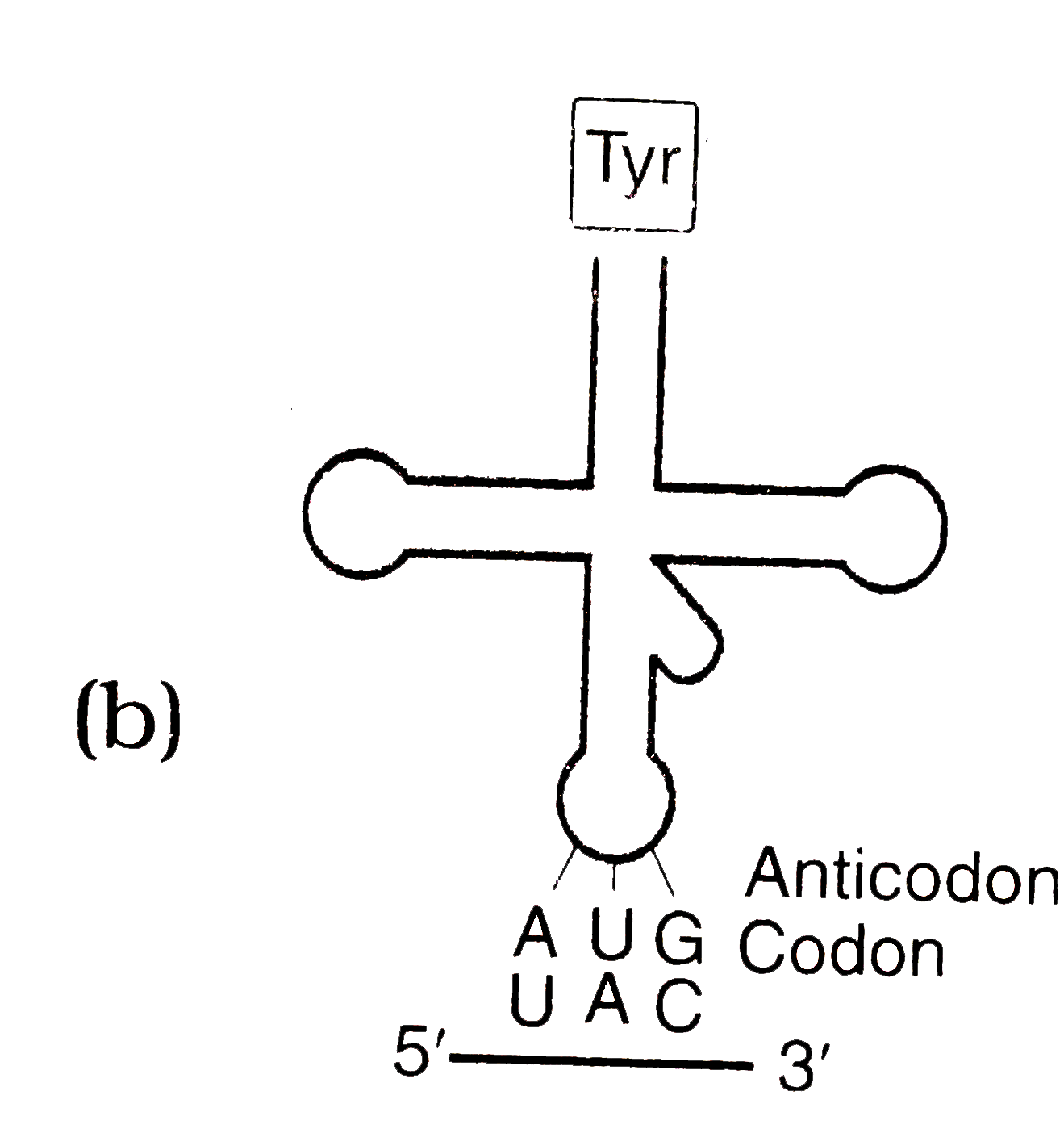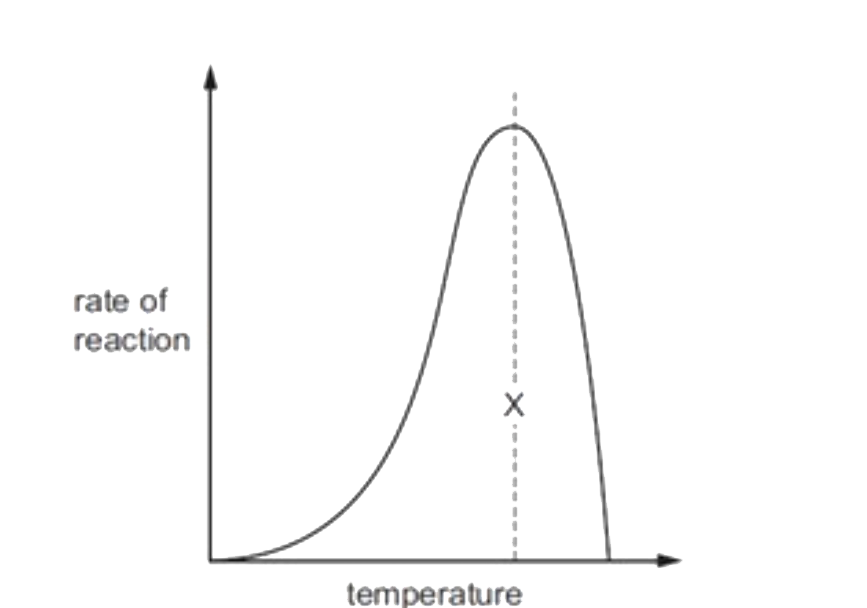(a) Name the scientist who called t-RNA an adapter molecule.
(b) Draw a clover leaf structure of t-RNA showing the following:
(i) tyrosine attached to its amino acid site
(ii) anticodon for this amino acid in its correct site (codon for tyrosine Is UAC)
(c) What does the actual structure of t-RNA look like?
(a) Francis Crick
(b)
(c )In actual structure, the tRNA is a compact molecule which looks like inverted L
Topper's Solved these Questions
- BOOK - TRUEMEN BIOLOGY ENGLISHCHAPTER - GENETICS AND EVOLUTION EXERCISE - SECTION-D25videos
GENETICS AND EVOLUTION
- BOOK - TRUEMEN BIOLOGY ENGLISHCHAPTER - GENETICS AND EVOLUTION EXERCISE - SECTION-B38videos
GENETICS AND EVOLUTION
- BOOK - TRUEMEN BIOLOGY ENGLISHCHAPTER - GeneticsEXERCISE - ASSERTION AND REASON122videos
Genetics
- BOOK - TRUEMEN BIOLOGY ENGLISHCHAPTER - HUMAN HEALTH AND DISEASEEXERCISE - MULTIPLE CHOICE QUESTIONS209videos
HUMAN HEALTH AND DISEASE
Similar Questions
(a) Name the scientist who called tRNA an adapter molecule
(b) Draw a clover leaf structure of t-RNA showing the following :
(i) tyrosine attached to its amino acid site (ii) anticodon for this amino acid in its correct site (codon for tyrosine is UCA)
(c) What does the actual structure of t-RNA look like.View SolutionAssertion :- t RNAs are specific for each amino acid but there are no t-RNAs for stop codons.
Reason : The secondary structure of t-RNA has been depicted that looks like a colver-leaf.View Solution
Knowledge Check
- Question 1 - Select One
Which of the following statements regarding the structure of proinsulin and mature insulin are not correct ?
(i) Proinsulin is made up of three polypeptide chains -A,B and C
(ii) c- polypeptide chain with 33 amino acids is removed prior to insulin formation
(iii) Mature insulin is made up of 51 amino acids arranged in two polypeptide chain -A and B
(iv) Polypeptide chain A has 30 amino acids and polypeptide chain B has 21 amino acids
(v) Polypeptide chains A and B are interconnected by only one S-S linkage.A(i) and (ii)B(iii) and (iv)C(iv) and (v)D(iii),(iv) and (v)
Consider the following processes
1. Synthesis of t-RNA
2. Attachment of an amino acid to ATP.
3. Acetylation of amino acid attached to t-RNA.
4. Charging of t-RNA
Which of the above is/are the functions of aminoacylt-RNA synthetase?View Solutionmatch the columns and choose the correct option
a. helicase
b.DNA ligase
c. Primase
d. aminoacyl t-RNA synthetase
i.joins DNA fragment ii.synthesis of RNA iii.unwinds DNA helix iv. Activation of amino acidView SolutionConsider the following statements and choose the correct option :-
(a) Six codons do not code for any amino-acid.
(b) Codon is read in m-RNA in a contiguous fashion.
(c) Three codons function as stop codons.
(d) In eukaryotes the initiator codon AUG codes for methionine.View SolutionThe graph shows the effect of temperature on the rate at which the enzyme in a biological washing powder digests and removes fruit juice stains .

Which statements explain the shape of the graph at temperatures higher than X ?
I. Bonds are broken between the R groups of the amino acids in the polypeptide chains of the enzyme.
II. There are more collisions between the enzyme and its substrate.
III. The tertiary structure of the enzyme is altered.
Iv. The shapes of the active site and the substrate are no longer complementary .View SolutionWhich is correct -
(i) t-RNA has an anticodon loop tht has bases complementary to the code
(ii) t-RNA has an amino acid acceptor end
(iii) t-RNA are specific for each amino acid
(iv) For initiation, there is specific t-RNA that is referred to as initiator t-RNA
(v) For termination there is specific t-RNA that is referred to as terminator t-RNAView SolutionThe following features occur during protein synthesis:
(i) Movement of m-RNA from the nucleus into the Cytoplasm, where it binds to the ribosomes
(ii) Formation of amino acyl t-RNA complex
(iii) Transcription of specific segments of DNA into m-RNA molecules in the nucleus
(iv) Binding of N-terminal amino acid, methionine t-RNA to the 'P' site of the ribosome. The t-RNA anticodon "pairs with AUG on m-RNA"
(v) Formation of peptide bond between first and second amino acids at the 'A' site
(vi) Release of the completed polypeptide chain from ribosomes
(vii) Migration of dipeptide to form a tripeptide and then a polypeptide The correct order of events isView SolutionAfter the addition of the last amino acid to a growing polypeptide chain during the process of protein synthesis, one of the termination codons reaches the appropriate site on the ribosomal surface and then the following envents take place
(i) Release of t-RNA molecule from the ribosome.
(ii) Dislodging of polypeptide chain from the t-RNA
(iii) Dissociation of ribosomes into large and small subunits. ltBrgt The correct sequence of these events:View Solution

